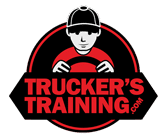Losing a job is difficult, but in today’s economy, one career path stands out for those looking to bounce back quickly—truck driving. The trucking industry is booming, and drivers are in high demand. If you’re wondering how to transition, here’s a step-by-step guide on becoming a truck driver.

Gaining Employment as a Truck Driver
The path to becoming a truck driver for an unemployed individual involves several key steps. The first step is to research CDL training options. Programs like the WIOA or state-run job retraining initiatives can help cover the costs of training. Many community colleges and technical schools also offer CDL courses as part of these programs. Alternatively, some trucking companies provide free training in exchange for work commitment after obtaining your CDL.
Once a training program is selected, the next step is attending CDL school. Here, you’ll learn both the classroom material needed to pass the written CDL exam and the hands-on skills required for the road test. After completing the training, you’ll need to pass both the written and driving tests to earn your Commercial Driver’s License.
After obtaining your CDL, many schools offer job placement assistance, connecting you with trucking companies eager to hire new drivers. Some programs even guarantee job offers for graduates. From there, you can choose from various types of trucking jobs.
Why Truck Driving Is a Great Career Choice
Truck driving offers numerous benefits. For one, the pay can be competitive. Entry-level positions averaging at $40,000 per year. There’s also a variety of routes available—local, regional, or over-the-road (OTR). This allows you to find a driving style that suits your lifestyle. The industry’s stability also ensures you won’t have to worry about being laid off again anytime soon.
Getting Started: What You’ll Need
Before starting, you’ll need to earn a Commercial Driver’s License (CDL). This is a license required to operate large vehicles, such as tractor-trailers, buses, and other commercial vehicles. The process typically involves getting a learner’s permit. The next steps include attending a truck driving school, passing a written knowledge test, and passing a road skills test.
Training Options for the Unemployed
One of the biggest hurdles to becoming a truck driver is the cost of CDL training, which can range from $3,000 to $12,000. However, if you’re unemployed, there are several ways to get this training at little or no cost. Certain state and federal programs grants for unemployed individuals to train for high-demand jobs, including trucking. Many community colleges also offer subsidized programs. Moreover, some trucking companies provide free CDL training if you agree to work for them after getting your license.
Free CDL training
This is a fantastic opportunity to enter the trucking industry without upfront costs. For example, programs like the Workforce Innovation and Opportunity Act (WIOA) offer CDL grants and funding for those who qualify.
Many trucking companies also offer free training programs to fill the high demand for drivers. These company-sponsored programs typically cover all training expenses in exchange for a work commitment.
Additionally, certain state and federal programs provide truck driving grants that can cover the full cost of CDL training for eligible job seekers. Community colleges and vocational schools often partner with these programs, offering free CDL courses that help unemployed individuals.
Subsidized CDL Training
Some states partner with community colleges to provide affordable CDL training as part of their job retraining initiatives. Veterans can also use their GI Bill benefits to cover the cost of CDL training at approved schools. Moreover, many states like Iowa and Vermont have employment assistance programs that include CDL training for residents looking to start a new career.
Job Placement Assistance After CDL Training
Once you complete your training and pass the CDL exams, the next step is securing a job. As mentioned, many truck driving schools have strong connections with trucking companies and provide job placement services. They often have recruiters on site who are eager to hire newly licensed drivers. Some programs even guarantee job placement for graduates, so you can transition straight from the classroom to the road.
Different Types of Trucking Jobs
There’s more than one way to be a truck driver. For example, tanker drivers transport liquids or gas between different locations. They may drive large or small trucks and travel long distances depending on what they are transporting. There are also local drivers. They haul cargo in a variety of sizes on local routes. This is usually within the same locality or state. Additionally, OTR truckers deliver more goods with larger trucks including tractor-trailers. OTR truck drivers travel unique routes as they move goods over long distances.
Conclusion
Becoming a truck driver could be the fresh start you need after losing a job. With demand for drivers at an all-time high and plenty of resources for free or subsidized CDL training, you can quickly transition into this rewarding career. Take advantage of the programs available, get your CDL, and soon you’ll be steering your way toward a secure and fulfilling new profession.
TruckersTraining.com provide information, tools and resources to potential truck drivers in the U.S. We hope that you can use the content on the site to help you decide if want to drive trucks for a living.
